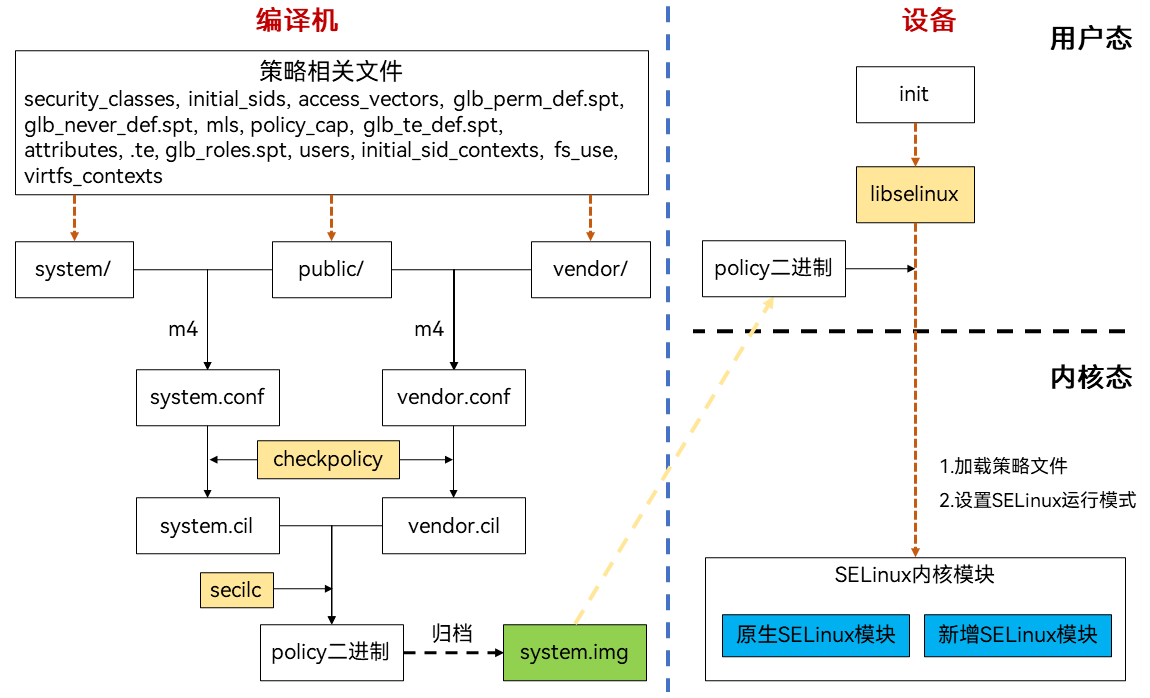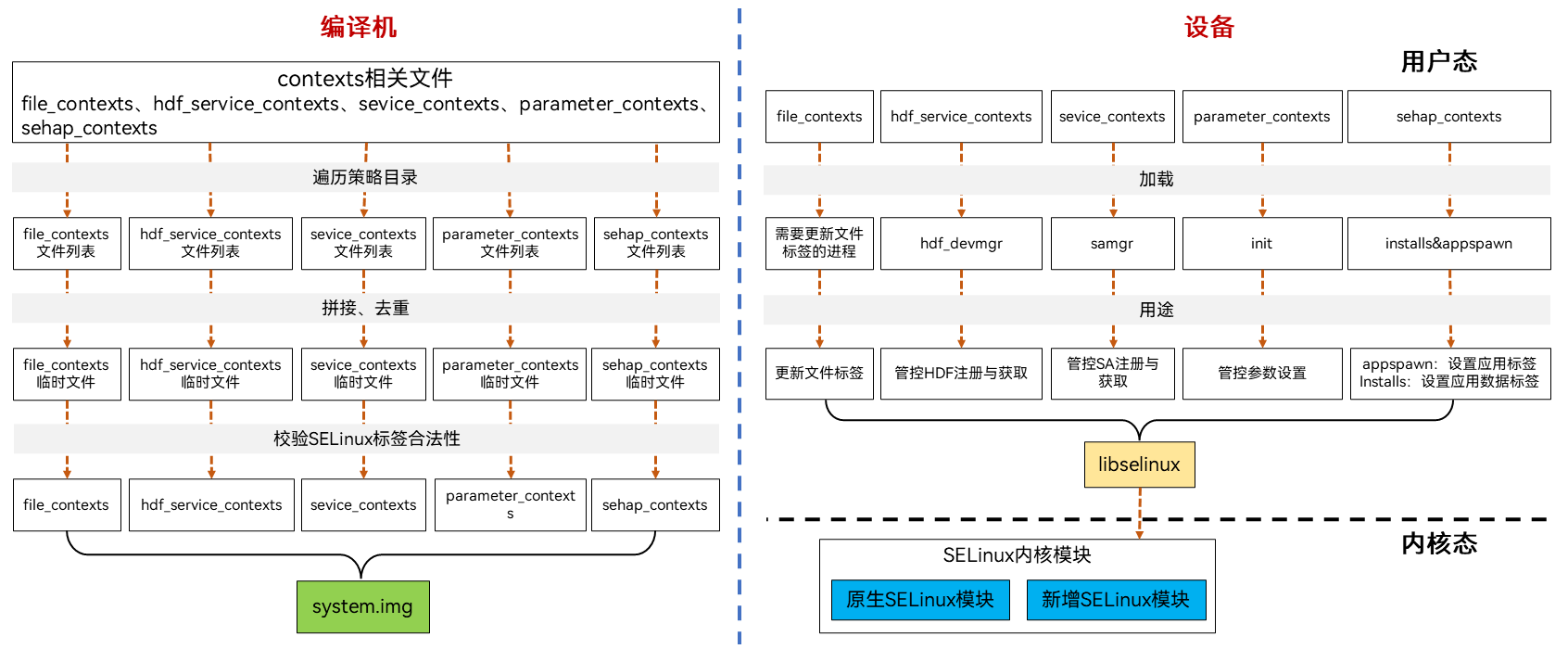OpenHarmony SELinux编译与加载
策略编译与加载
OpenHarmony SELinux策略编译流程在编译机中进行,加载流程在init进程启动后执行,总体流程如图:
图1 OpenHarmony SELinux编译和加载流程图

策略编译
OpenHarmony SELinux策略编译主要包括以下流程:
- 按
security_classes, initial_sids, access_vectors, glb_perm_def.spt, glb_never_def.spt, mls, policy_cap, glb_te_def.spt, attributes, .te, glb_roles.spt, users, initial_sid_contexts, fs_use, virtfs_contexts顺序遍历策略目录//base/security/selinux_adapter/sepolicy/,得到父目录为system和public的策略文件列表,使用m4宏处理器将策略文件列表拼接成system.conf中间文件,这里会决定是否展开隔离宏。同理,遍历得到父目录为vendor和public的策略文件列表,使用m4宏处理器将策略文件列表拼接成vendor.conf中间文件,这里也会决定是否展开隔离宏。 - 使用开源软件checkpolicy将conf中间文件编译为.cil明文策略文件,得到
system.cil和vendor.cil。 - 使用开源软件secilc将
system.cil和vendor.cil进行合并,编译为二进制策略文件,编译时会进行neverallow检查,违反neverallow时会编译报错,参考OpenHarmony SELinux常见问题。 - 编译后的二进制策略文件会归档到
system.img中,位于/system/etc/selinux/targeted/policy/policy.31。
策略加载
OpenHarmony SELinux策略加载主要经过以下流程:
- init进程在启动后,通过开源软件libselinux提供的用户态操作内核态的接口将selinux二进程策略文件加载到内核。
- 然后根据配置文件
/system/etc/selinux/config中SELINUX字段的值设置运行模式,SELINUX=enforcing时,设置为强制模式,SELINUX=permissive时,设置为宽容模式。从OpenHarmony 3.2开始,OpenHarmony SELinux默认以强制模式运行。
contexts编译与加载
OpenHarmony SELinux contexts包括file_contexts、hdf_service_contexts、sevice_contexts、parameter_contexts、sehap_contexts。这些文件不随策略编译而编译,需要单独归档。总体流程如图:
图2 OpenHarmony SELinux contexts编译和加载流程图

contexts编译
OpenHarmony SELinux contexts编译主要包括以下流程:
- 分别遍历各类型的contexts文件,得到每个类型contexts的文件列表。
- 对列表分别拼接去重,生成contexts中间文件。
- 对contexts中间文件中使用的SELinux标签校验合法性,得到contexts文件。
- 将contexts归档到
system.img,位于/system/etc/selinux/targeted/contexts/。
contexts加载
OpenHarmony SELinux contexts加载按类型不同,加载方式不同:
| contexts类型 | 加载方 | 用途 |
|---|---|---|
| file_contexts | 需要更新文件标签的进程 | 更新文件标签 |
| hdf_service_contexts | hdf_devmgr | 管控HDF注册与获取 |
| sevice_contexts | samgr | 管控SA注册与获取 |
| parameter_contexts | init | 管控参数设置 |
| sehap_contexts | appspawn installs |
appspawn:设置应用标签 installs:设置应用数据标签 |